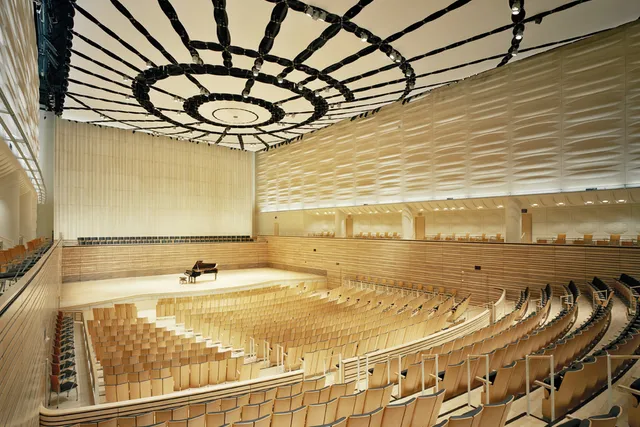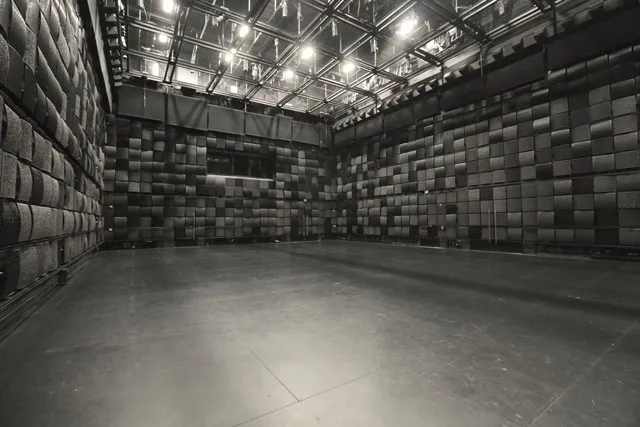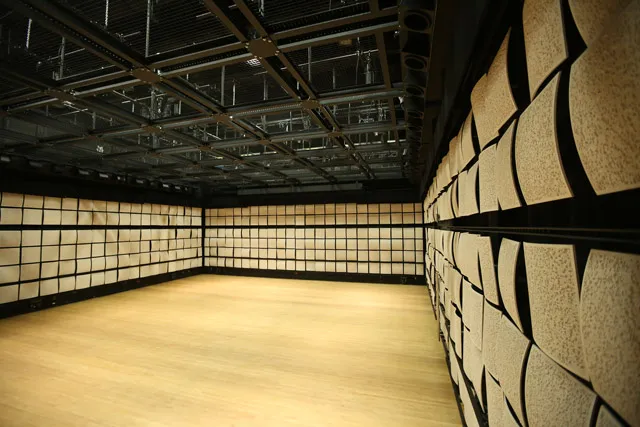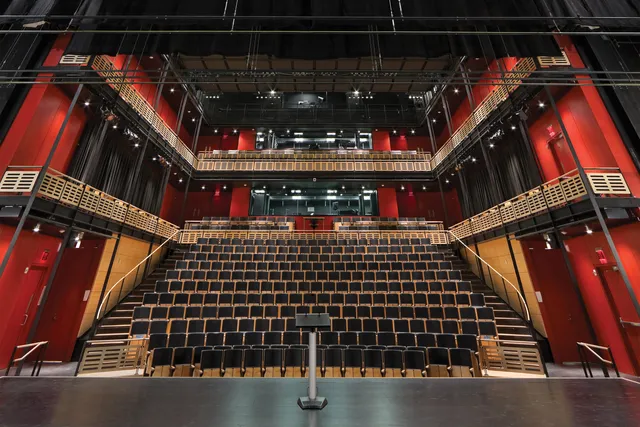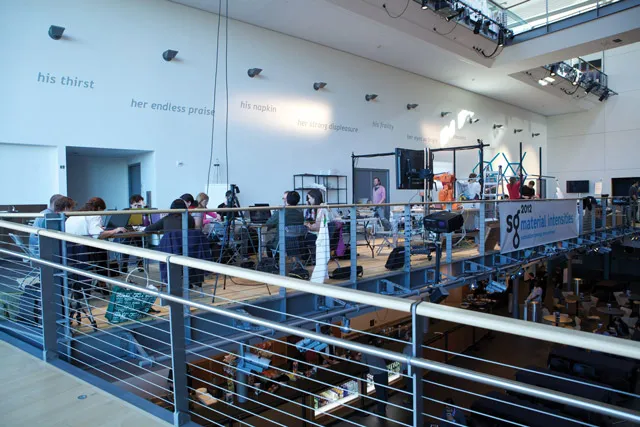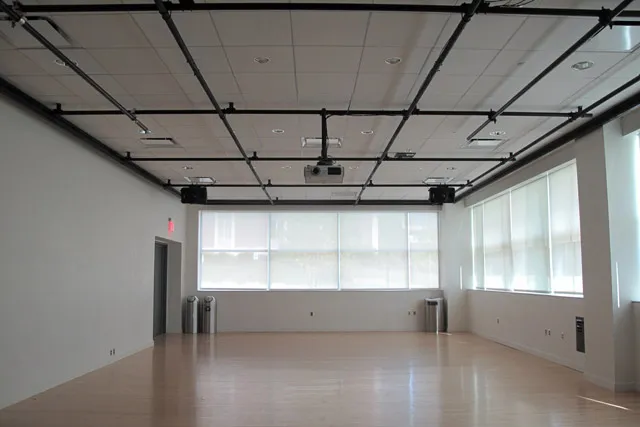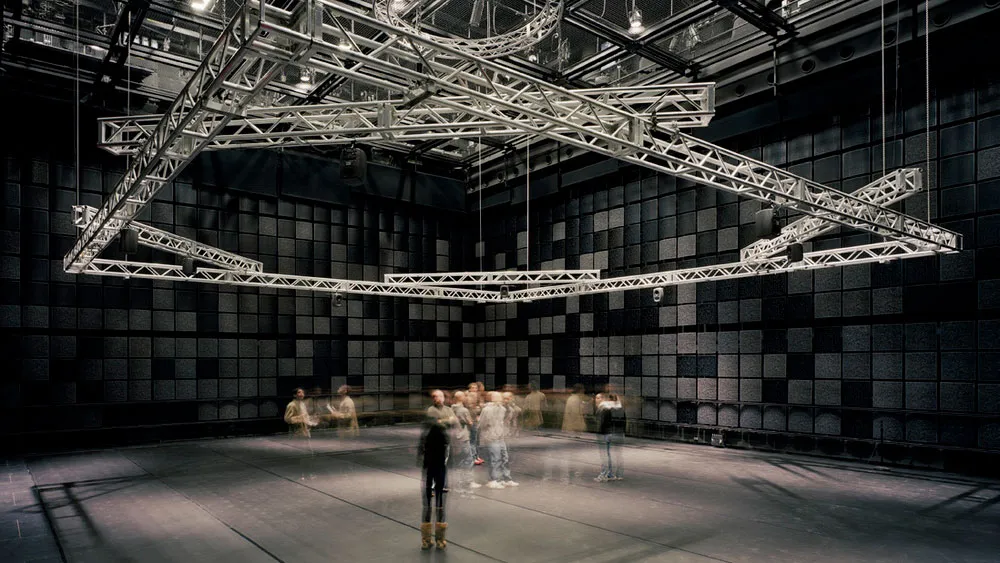
Venues
To Human Scale
EMPAC is designed and built to the human scale. It accommodates technology, but it is not built to the scale of technology, even though it is filled with perhaps more technology than any other performing arts center. And even though it has venues like no other research center.
Designing and building for technology is easy; designing and building to the human scale is very complicated. It would seem that it is easy to build for us humans, since that is what buildings were meant for in the first place. But politics, economics, and technology have created such intertwined sets of criteria for buildings that basic human requirements are often not accommodated. We accept the creation of buildings without daylight, without high-quality artificial light, a pleasant level of humidity, or a quietness that allows our ears to rest and to hear the soft sounds our ears can perceive.
With EMPAC, a center for experimental media and performing arts has been designed and built to the scale that allows the expression and experience with our bodies and minds, through our senses. It is defined by the physical requirement of our senses and designed to our human scale.
Main Image: EMPAC's Studio 1. Photo: Paul Riviera.
